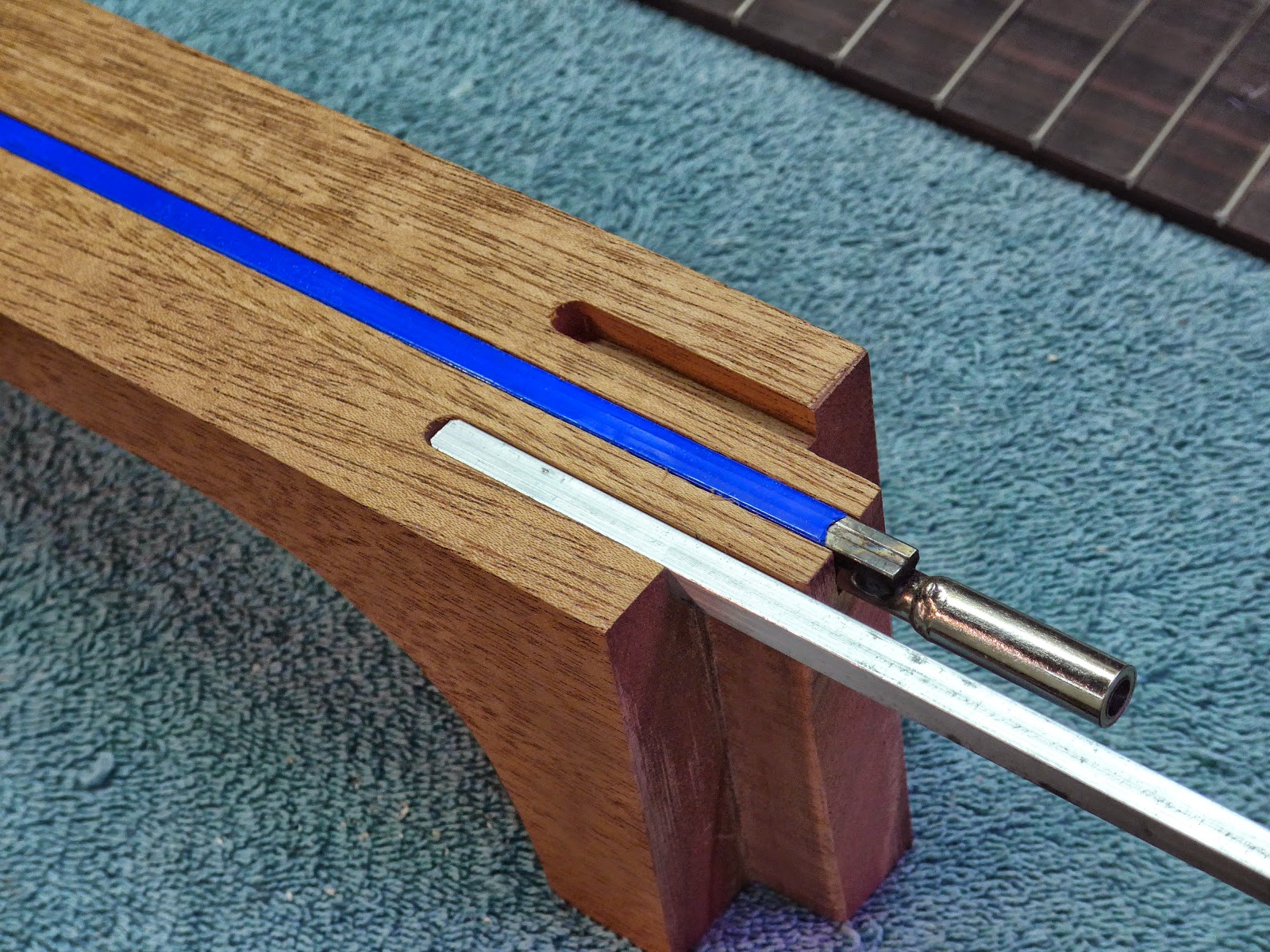We're so close to finishing this I can almost hear it. The beauty of this guitar is simply overwhelming. It doesn't even have its final coats of finish on it yet and it already looks like a catalogue model! I took the body home Tuesday to help with some humidity problems.
I'm at the point now where I regret even mentioning those humidity bumps in the last blogs. I'm such a journalist (still) looking for drama, or sex, or whatever (Necking with Bruce...pretty clever, no?) that I made way too much of it. Sorry Bruce and sorry to the readers for getting obsessive about these kinds of things.
Someone should just slap me.
(No, I'm just kidding.)
All guitars have their flaws, and it's every builder's challenge to finish the instrument so you never know what or where they are. Even the old Martin guitars have that annoying crack between the end of the pick guard and the bridge. It's a function of when the finish is put on and when the pick guard is put on, I've been told. I have two Martin guitars and I would have even more if I could because, crack or not, they will sit you right back in your seat when you hear them because they are that good.
It's crucial to always remember that guitars are about sound and emotion.
How they look? Ask Willie Nelson about Trigger!
 |
| Trigger. Photo from John Bell Photography |
For the record, no one is going to wear a hole in mine. It will not have a name. There will be no autographs on it except for Bruce's, which you can't see. So, onward...
Guitar necks are inherently mysterious because no one can actually see what is going on inside of there. Hundreds of pounds of string tension are all aimed at pulling them out of line, yet they don't shift (if they are well built) because luthiers account for those kinds of stresses.
Here's Bruce's solution to a couple of stress problems he has encountered, what, hundreds of times in his 30 years of repairing instruments at his own store and then for the Old Town School of Folk Music's Different Strummer shop.
 |
| Troughs for aluminum braces |
 |
| A brace, one of two, in place |
This is the heel of the neck, down at the end that hooks onto the body of the guitar. That blue thing running down the middle of the neck is the adjustable tension bar that helps keep the proper shape in the neck despite changes in temperature and humidity. The wood thing coming off the bottom of the neck is a tenon that will fit right into a slot of its size on the body of the guitar. That aluminum bar is one of Bruce's crucial refinements. When he is finished working it over, it will provide a remarkable stability on one of the crucial guitar weak points, the top where the neck fits in. Two of those aluminum struts will be screwed into the fingerboard to make the guitar end of it, the part that fits over the top of the guitar, rigid. It's not going anyplace, in other words.
Best of all, no glue to put it together. It is traumatic for all parties involved to have to remove the glued neck from a guitar. But you can't reset if (inevitable after many years of playing) without doing that and even with great caution, you can damage the guitar quite a bit prying the neck off. That's because it's glued in a couple of different directions, not the least of which is to the top of the guitar.
Bruce's (and increasingly a lot of other makers) don't work that way.
The neck will be bolted on and as an extra little bit of stability, the fingerboard will be screwed to the ends of these aluminum braces.
I have always wondered how luthiers get their fingerboards to stay in place once they have spread glue all along the neck (and the fingerboard bottom). There is a tiny secret.
 |
| Centering the fingeboard |
There is a tiny nail beneath the fingerboard to hold it exactly in place as the piece is being smooshed onto the neck. Bruce uses that nail to hold the top of the fingerboard in place as he aligns the bottom with the heel of the neck. Very dandy and leads to a perfectly placed fingerboard.
It takes lots of clamps to hold this down to dry, because this glue joint is one of the most important in the guitar. It must resist all those tensions, never shift, never break away from the neck and stay flatly in place, no matter what.
 |
| Clamped and drying |
Everything is going to sit for about a week now. Then we'll gather for some of the final touches. Bruce will put the neck on, the tuners and locate the perfect spot for the bridge (where the strings hook on). We'll also look at some final finish points that will make this my guitar, no questions asked.
Please come back.

No comments:
Post a Comment